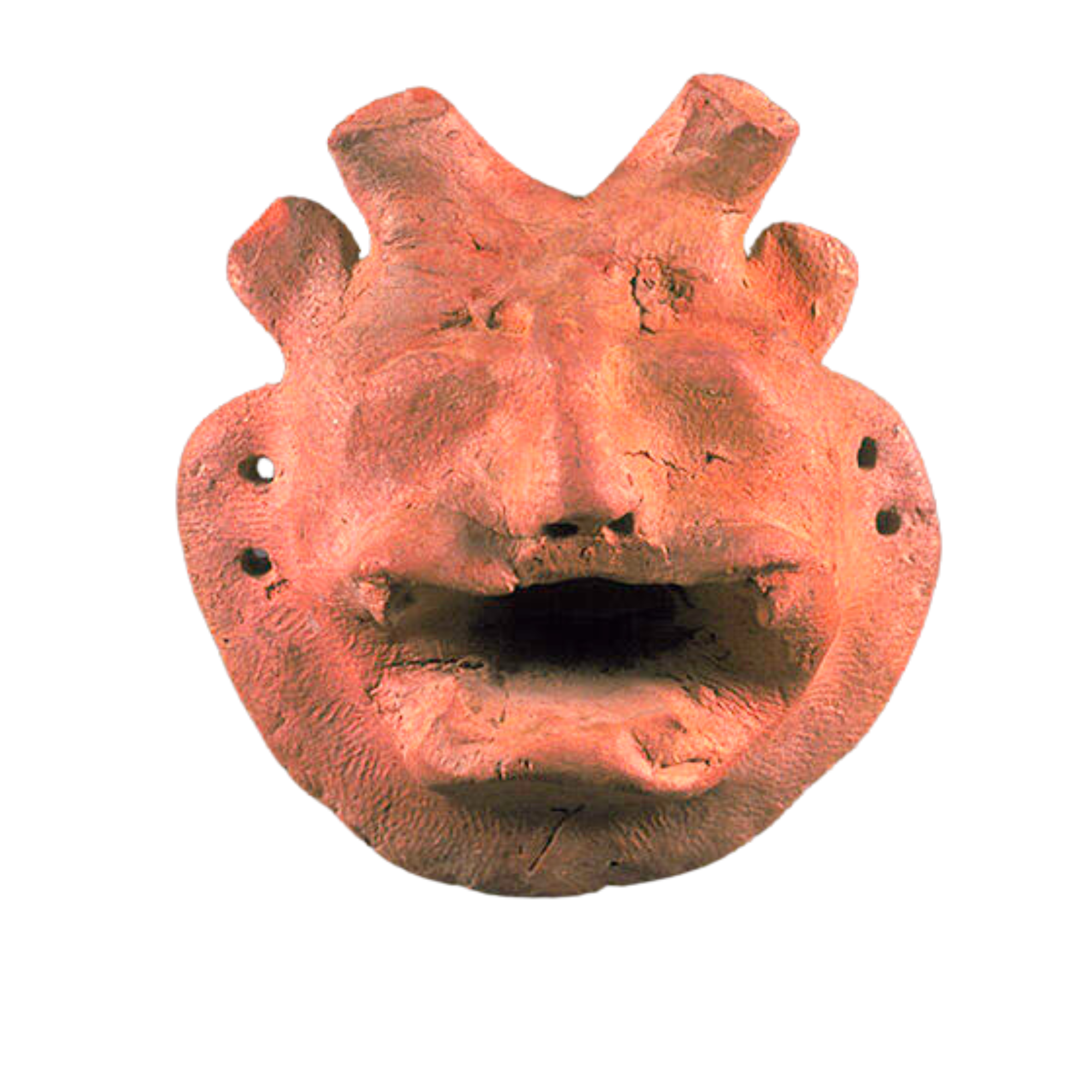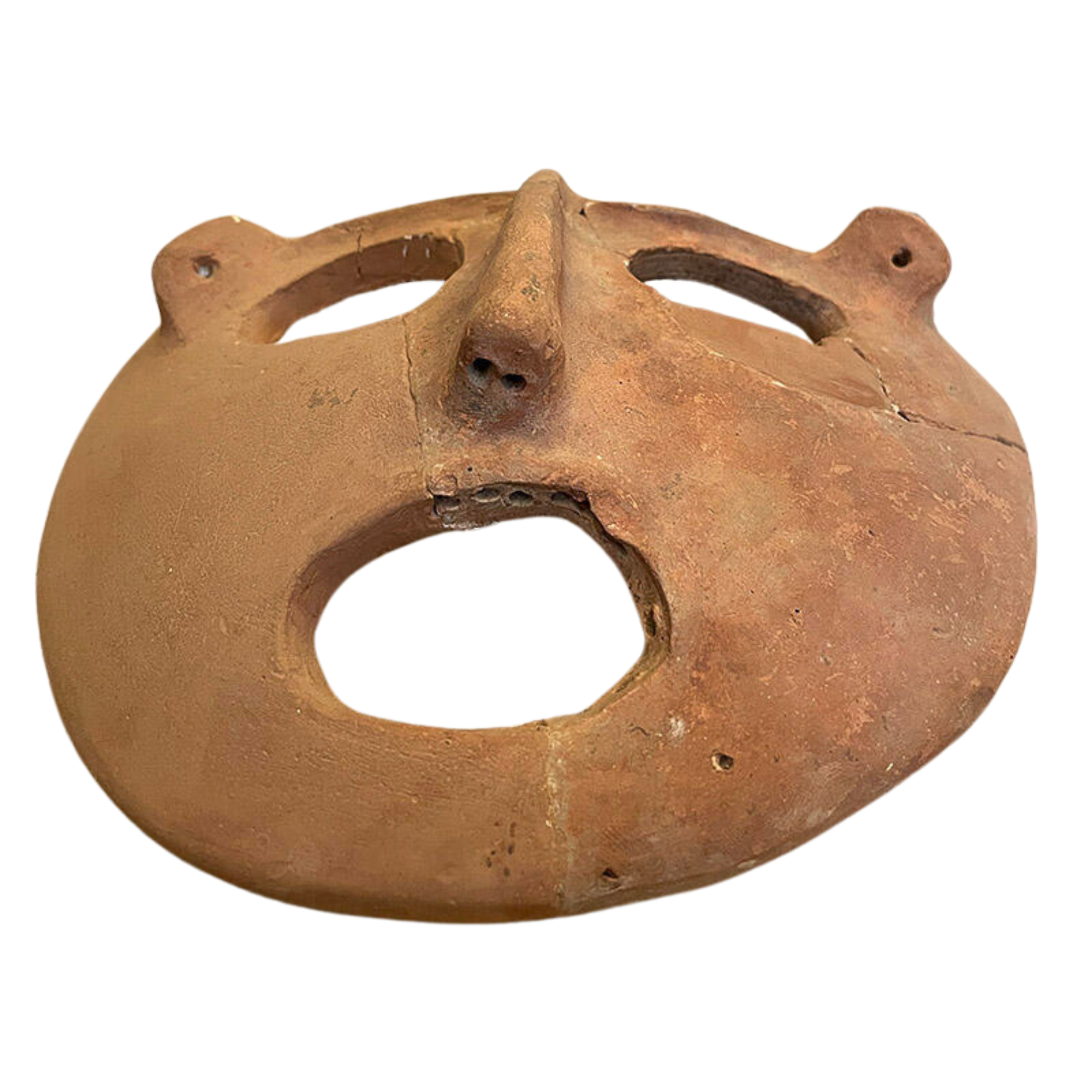Harappa, an archaeological site and an ancillary city of the Indus Valley civilisation, has always been a cave of wonders for historians and archaeologists alike. Among the large number of artefacts recovered from Harappa, masks hold importance as cultural and symbolic pieces, giving an insight into the social, religious, and artistic life in one of the earliest world urban setups.
Masks from the Harappa and Indus Valley civilisations serve as powerful forms of artistic expression, and a reflection of these societies' complex cultural and symbolic worlds. In her book The Ancient Indus Valley: New Perspectives, Jane McIntosh investigates the artistic aspects of these masks. "The artisans' masks exhibit exceptional artistic proficiency," she writes.
These masks demonstrate a profound respect for human creativity and nature by incorporating stylised human features and natural motifs. In numerous publications, Richard H. Meadow, an authority on the archaeology of South Asia, has addressed the artistic features of Indus Valley masks. In an interview, Meadow said, "The masks discovered at the Indus Valley Civilisation and Harappan sites are not merely ritual objects; they are works of art."
Another perspective comes from Bridget Allchin, who cowrote The Rise of Civilisation in India and Pakistan with her husband Raymond. "The masks from the Harappan period are exquisite examples of ancient craftsmanship. They reflect the society's artistic sensibilities and ability to imbue everyday objects with deeper cultural and symbolic meanings," she writes. These perspectives underscore that masks in ancient civilisations like Harappa and the Indus Valley were not merely functional items but were also significant forms of artistic expression.
Other than artistic expression, the Harappan masks bear immense cultural and symbolic value; they represent various features and aspects of the Indus Valley Civilisation in several cultural, religious and symbolic aspects. So, one can appreciate how significant these masks were as tools that became indispensable to ritualistic ceremonies, social gatherings, and creative expressions. For this reason, the faces cannot be taken as any simple artistic expression since, in a deeper sense, they help in understanding the way of life possibly followed by people of the civilisation.
Harappa masks are believed to have been used in religious rituals portraying gods or supernatural creatures. The article “Rita P. Wright in Journal of Archaeological Science" (2009) points out that facial stylisation with extremely enlarged eyes and mouths imitates depictions symbolising divine or spiritual features, and they were probably part of rituals to cite or satisfy gods. The Harappa masks find parallels in various contemporary Hindu religious practices.

In Hinduism, masks are still utilised in rituals, festivals, and performances to represent deities and mythical beings, illustrating a continuity of cultural traditions that span millennia. One notable example is the use of masks in the festival of Durga Puja. In this celebration, elaborate masks and effigies of the goddess Durga and her entourage are crafted and worshipped. These masks are often made of clay and painted with vibrant colours, embodying the goddess's various aspects and victory over the demon Mahishasura. The use of masks in this festival highlights the belief in the divine presence that masks can invoke, which could be similar to the ancient Harappan practice of using masks to represent deities.
Another example is the traditional dance-drama of Theyyam in the Indian state of Kerala. Performers don intricate masks and costumes to transform into gods, spirits, and heroes. The masks used in Theyyam are believed to be imbued with the essence of the deities they represent, allowing the performers to channel divine powers and convey religious narratives. This ceremonial use of masks to embody supernatural beings mirrors the ancient Harappan practice, where masks connected worshippers with the divine realm.
Similarly, the Ram Leela performances, particularly during the festival of Dussehra, involve actors wearing masks to portray characters from the Ramayana, such as Rama, Sita, Hanuman, and Ravana. These masks help the performers embody the divine and heroic qualities of the characters, bringing the epic's stories to life for the audience.
In the festival of Karthika Deepam, celebrated in Tamil Nadu, masks of Lord Murugan and other deities are used in processions and rituals. Devotees wear these masks to participate in religious dances and enact mythological stories, invoking the blessings and presence of the deities.
These contemporary examples demonstrate how masks in Hindu religious rituals serve as powerful tools for embodying and venerating the divine. They provide a tangible link to the spiritual world, much like the masks from the Harappan civilisation, which were used to portray gods and supernatural creatures in their religious practices.

This continuity underscores the enduring cultural significance of masks in connecting humanity with the divine throughout history. In a journal "Asian Perspectives" publication of 2015, Peter Underhill shows evidence that the masks were used in ancestor worship among Harappans. They may have been worn or displayed during a ceremony dedicated to the honour of deceased kin as evidence of Harappan's belief in continuity between the living and the dead. This was in line with most other ancient uses of masks in funerary rites and practices of ancestral veneration.
According to the "International Journal of South Asian Archaeology", 2011, Harappan masks with different facial expressions and decorations reveal their possible use in storytelling or dramatisation. The latter may have been the key to maintaining the unity of communities by introducing the existing cultural narrative and social norms. In her article "The Archaeological Review" (2018), Sarah L. Smith writes that masks in Harappan society probably signified social status or identity based on their design and material. Highly designed and probably ornamented masks were perhaps worn publically by higher-status individuals as evident emblems of social hierarchy. This was indicative of the socially multifaceted nature of Harappans.
The Harappa masks are significant for their rich designs and craftsmanship. An article in "The Journal of Material Culture" (2010) by Kenneth A. R. Kennedy describes the advanced techniques applied to produce such masks, including fine carving and applying pigments. Its craftsmanship belongs to the Harappan people or reflects their artistic abilities and aesthetic sensibilities. Very often, symbolic imagery is set on the masks while other meanings can be attached. For example, one can see various animal motifs on some masks, symbolising different traits or some deities with whom the animals are associated.
An analysis in the Cambridge Archaeological Journal (2013) by Mark Kenoyer suggests that these motifs might have been used to invoke certain powers or qualities during rituals. Kenoyer highlights the intricate designs and materials used in creating masks, demonstrating high craftsmanship. The detailing includes pigmentation and carving, and depicts a well-developed sense of art and decoration.
These artefacts, sometimes depicting human faces or animals, reflect the importance of masks in ceremonies related to fertility, seasonal festivals, or shamanistic rituals. The depiction of animals in masks points to the significance of fauna in their mythology and daily life, possibly used by shamans to channel the spirits of these animals.
One of the primary theories regarding the use of Harappa masks is their connection to religious and ceremonial practices. Jane R. McIntosh, in her book The Ancient Indus Valley: New Perspectives, 2008, has asserted that masks have also been discovered in religious rituals to represent deities, spirits, or ancestral figures in such ancient cultures. Similarly, the unique features and stylised designs of the Harappa masks could be used to invoke or honour many gods and spiritual entities through ritual expressions.
Possehl (2002) goes even further in his The Indus Civilisation: A Contemporary Perspective to suggest that masks could have been used for social and cultural events such as festivals or theatrical performances. A closer look at the expressions and decorations of the masks gives clear indications that these could have been used in telling stories and having fun, as well as norms and values in Harappan society.
In The Indus Civilisation by Sir Mortimer Wheeler, the discovery of terracotta masks provides evidence of these ancient people's ritualistic practices and artistic endeavours. These masks, often found in burial sites, suggest a belief in an afterlife and the need to protect or guide the deceased on their journey. They might have been used in funerary rites or as offerings to deities, indicating a complex spiritual life.
Moreover, in "The Art and Architecture of the Indian Subcontinent" by James C. Harle, the masks represent various gods and spirits, serving both protective and ornamental purposes. The use of masks in theatrical performances or storytelling suggests a rich cultural tradition of oral history and drama, where masks helped convey characters and narratives vividly to the audience.
"The People of the Indus" by Ratagar delves into the multifaceted role of masks in the Harappan and Indus Valley civilisations. Ratagar's research uncovers how masks were integral to various life aspects, from religious ceremonies to theatrical performances. Ratagar discusses the use of masks in religious rituals, where they often depict deities and spirits. These masks were crafted from terracotta, shell, and metal, reflecting the civilisation's access to diverse resources and sophisticated artisanship. These masks' detailed and expressive features suggest they were used to invoke and communicate with divine entities during ceremonies, highlighting the spiritual and religious depth of the Indus Valley culture.
The book also examines the role of masks in social and theatrical contexts. Ratagar points out that masks might have been used in community gatherings and performances, serving as tools for storytelling and education. These performances were likely a means of preserving and passing down myths, legends, and cultural values. The use of masks in such settings indicates a rich tradition of oral history and a communal approach to education and entertainment.
Ratagar's analysis emphasises the symbolic significance of masks, where each design and motif had a specific meaning or represented a particular aspect of their world. For instance, masks depicting animals were artistic expressions and embodied the traits and powers associated with those animals, which were believed to influence the wearers during rituals. Masks are more than just remnants of the past; they are windows into these ancient societies' cultural, spiritual, and social fabric, offering valuable perspectives on their beliefs, practices, and way of life. The Harappa masks also reveal the creativity and aesthetic sense of the people from the Indus Valley.
The masks of Harappa remain important in their historical, cultural, and artistic values: they reveal so much about the spiritual as well as social dimensions of the Indus Valley Civilisation, indicating at the same time great depth in such ancient societies. Only increasing research and excavations can fortify our understanding of these enigmatic artefacts, further illuminating one of humanity's earliest and most engaging urban cultures.
Arshad Awan is a Lahore based author, educationist, brand strategist and historian. He can be reached at: arshadawan@msn.com
All facts and information are the sole responsibility of the author
